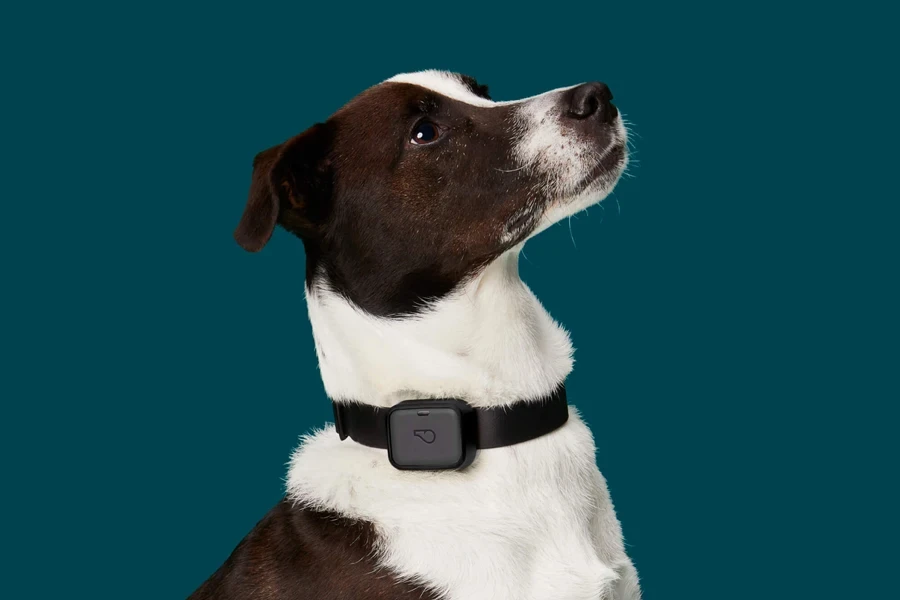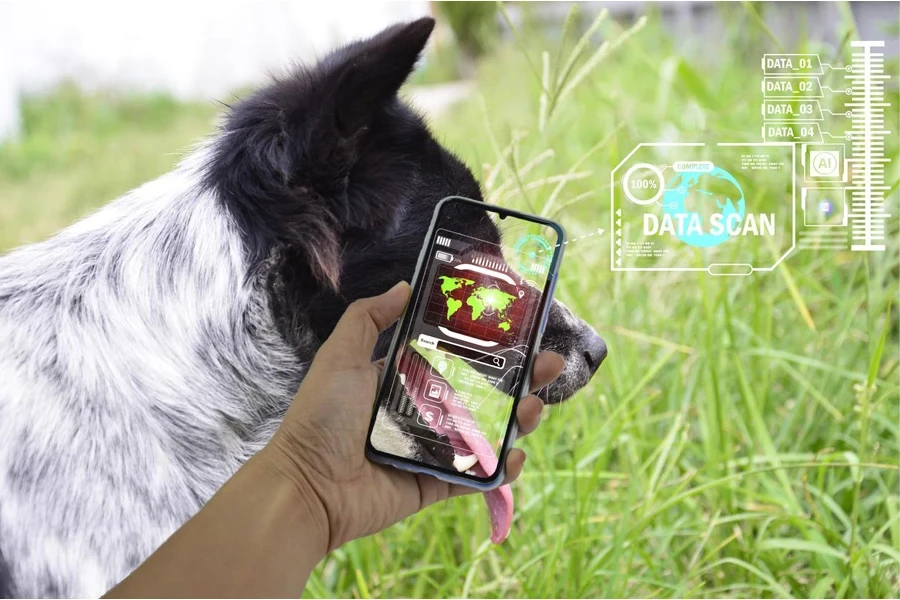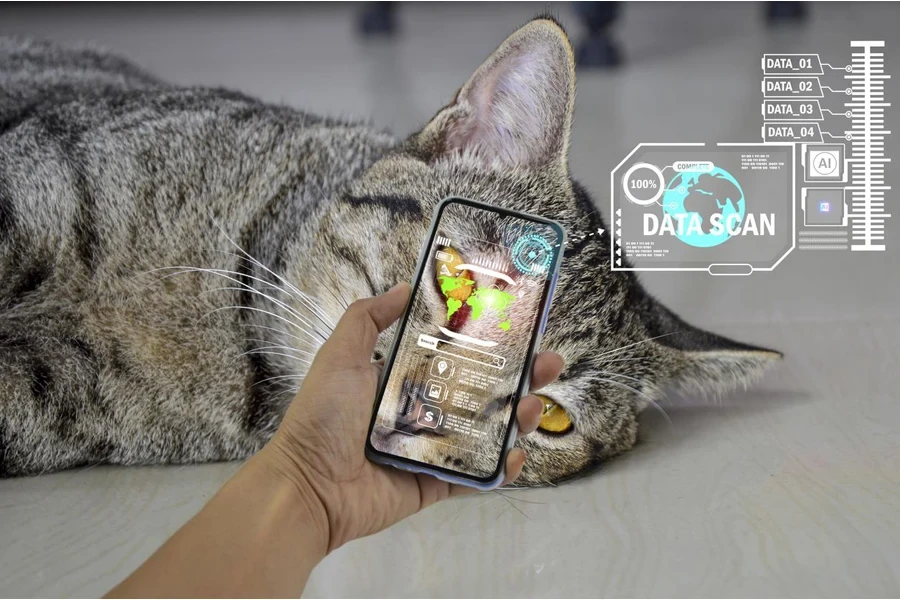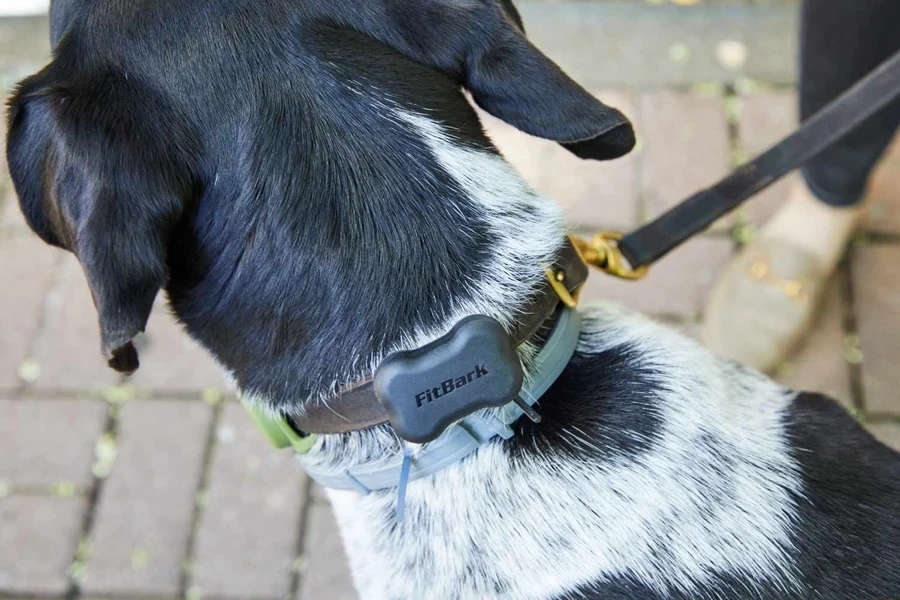In the dynamic world of pet care, the significance of pet trackers has ascended to new heights, becoming indispensable tools for the safety and well-being of our beloved animals. As we step into 2024, technological advancements have revolutionized these devices, making them more than mere location indicators. Today’s pet trackers embody a blend of precision, reliability, and user-friendly features, tailored to cater to the diverse needs of modern pet owners. They are no longer just gadgets; they have transformed into vital companions in our journey of responsible pet ownership. This evolution marks a pivotal shift in how we safeguard and connect with our pets, underscoring the essence of these innovative devices in our daily lives.
Table of Contents:
1. Market overview
2. Different types and their features
3. Things to consider when selecting products
1. Market overview

The global Pet Tech market, encompassing pet trackers, is experiencing a remarkable surge. In 2023, the market size stood at approximately USD 5666.3 million and is projected to escalate to an impressive USD 12180 million by 2031, according to LinkedIn. This growth trajectory translates to a Compound Annual Growth Rate (CAGR) of 13.6% during this forecast period. Such expansion is indicative of the increasing reliance on technology for pet care and the growing demand for innovative pet safety solutions.
Key players shaping this dynamic market include Actijoy Solution, All Home Robotics, CleverPet, Dogtra, and Garmin Ltd., among others. These companies have significantly contributed to the industry’s evolution, introducing a range of advanced pet trackers and related technologies. In 2022, the combined market share of these top players underscored their dominant presence in the sector.
The market landscape has been witnessing significant shifts, primarily driven by technological advancements and changing consumer preferences. North America, particularly the United States and Canada, alongside Europe and Asia-Pacific regions, have shown notable growth. These regions have been instrumental in adopting and integrating pet tech advancements into everyday pet care, setting new standards in pet tracker functionalities and user experiences.
2. Different types and their features
In 2024, the pet tracker market will offer a variety of models, each with unique features catering to diverse needs. The main types include GPS, Bluetooth, and hybrid models.

GPS pet trackers have become increasingly sophisticated. They offer real-time tracking, allowing pet owners to monitor their pet’s location with precision. These trackers typically provide a wide range of coverage, often nationwide, making them ideal for pets that may roam far from home. The downside is their battery life; the continuous GPS connectivity often necessitates frequent charging. The Whistle Go Explore, as highlighted by Wirecutter, stands out in this category for its balance of accuracy and user-friendly interface.
Bluetooth pet trackers, on the other hand, are more suited for close-range monitoring. Their range is generally limited to about 100 feet, making them ideal for indoor pets or those in small outdoor areas. These trackers often boast longer battery lives due to their limited range. However, their effectiveness diminishes significantly outside their Bluetooth range.
Hybrid models combine GPS and Bluetooth technologies, offering a middle ground between range and battery efficiency. These trackers use Bluetooth when the pet is nearby, conserving battery, and switching to GPS for long-range tracking. This adaptability makes them a versatile choice for many pet owners.
Recent advancements in pet tracker technology have introduced features like health monitoring, geofencing, and waterproofing. Geofencing, for instance, allows pet owners to set safe zones and receive alerts when their pet leaves these areas, a feature emphasized by both PCMag and PetHub as a critical development in pet safety. Newer models also integrate with mobile applications, offering user-friendly interfaces and detailed insights into a pet’s location and activity levels.
Durability is another critical factor in pet trackers. Modern devices are designed to withstand rough play and outdoor elements, ensuring longevity and reliability. This robustness, combined with improved battery life and advanced tracking capabilities, makes today’s pet trackers more effective than ever in ensuring pet safety and peace of mind for owners.

3. Things to consider when selecting products
In essence, selecting the right pet tracker is a balancing act between these various factors, tailored to the specific needs of the pet and the lifestyle of the owner. With the advancements in pet tracker technology, owners now have the tools to ensure their pets’ safety and well-being more effectively than ever before. When venturing into the selection of pet trackers, pet owners are faced with a myriad of factors that need careful consideration to ensure the best fit for their furry companions.

Firstly, compatibility with pet size and lifestyle is paramount. As stated by PetHub, not all trackers are suitable for all pet sizes – some are specifically designed for larger breeds, while others cater to smaller pets or even cats. The weight and dimensions of the tracker should not hinder the pet’s normal activities or cause discomfort. For active pets or those with specific behavioral traits, choosing a tracker that aligns with these lifestyle aspects is crucial.
Accuracy in tracking is another crucial factor. GPS trackers generally offer the most precise location tracking, especially important for pets that may venture far from home. However, pet owners need to consider the environment in which they live; for instance, dense urban areas with tall buildings may affect the GPS signal.
Ease of use is a key consideration, both in terms of attaching the tracker to the pet and in interacting with the tracking system. Most modern trackers are designed to be user-friendly, with simple set-up processes and intuitive apps that allow pet owners to monitor their pets effortlessly. As per the insights from PCMag, the user interface of the app and the ease of interpreting the data provided are significant factors.

Waterproofing and durability are essential, especially for pets that love to explore the outdoors. Modern devices are designed to withstand rough play and outdoor elements, ensuring longevity and reliability. This robustness, combined with improved battery life and advanced tracking capabilities, makes today’s pet trackers more effective than ever in ensuring pet safety and peace of mind for owners. Robust construction not only ensures the tracker’s longevity but also its reliability in all conditions.
Lastly, the significance of additional features cannot be understated. Health monitoring capabilities, such as tracking activity levels or sleep patterns, have become increasingly common and can offer valuable insights into a pet’s well-being. Geofencing, a feature highlighted by many experts, allows owners to set safe zones and receive alerts if their pet wanders off, adding an extra layer of security. Integration with mobile apps extends the convenience and control to the pet owner’s fingertips, enabling real-time updates and interaction with the tracker.
Conclusion
In the rapidly evolving landscape of pet care technology, the advent of sophisticated pet trackers has emerged as a game-changer. This article has navigated through the intricacies of the pet tracker market, underscoring the significant growth and innovation within the industry. We’ve delved into the diverse array of tracker types – from GPS to Bluetooth and hybrid models – each with its unique set of features like real-time tracking, range, and durability. Equally important, we’ve highlighted the critical factors for selection, including compatibility with pet size and lifestyle, accuracy, user-friendliness, and additional functionalities like health monitoring and geofencing.







